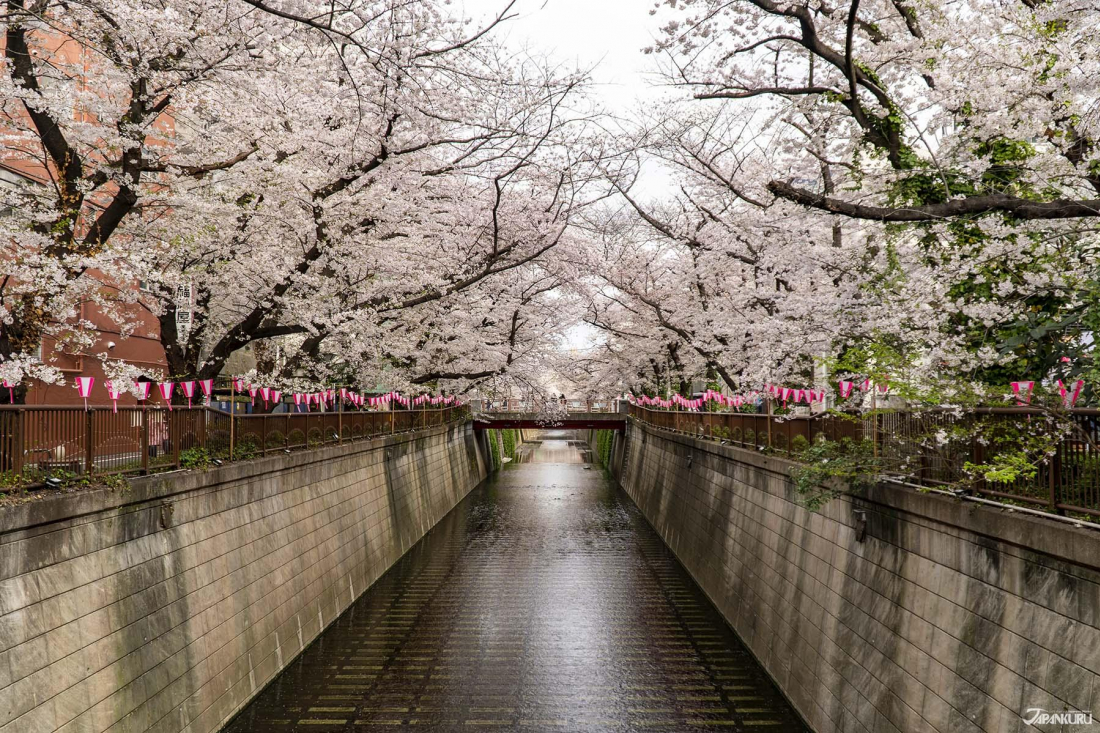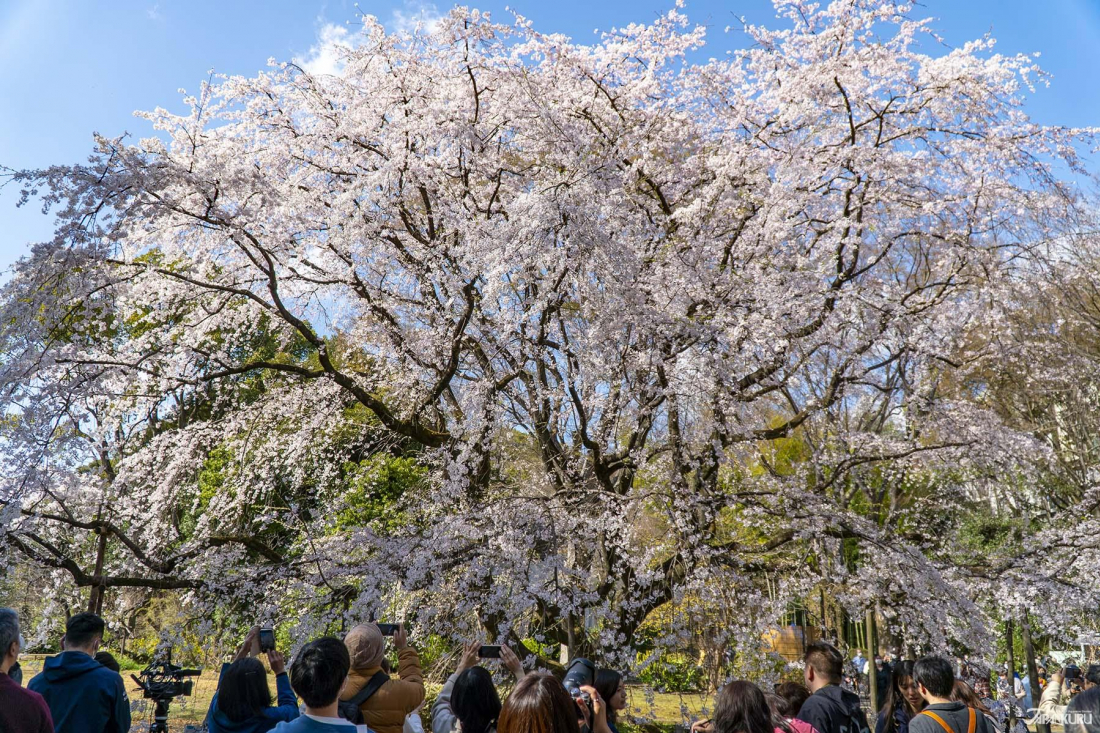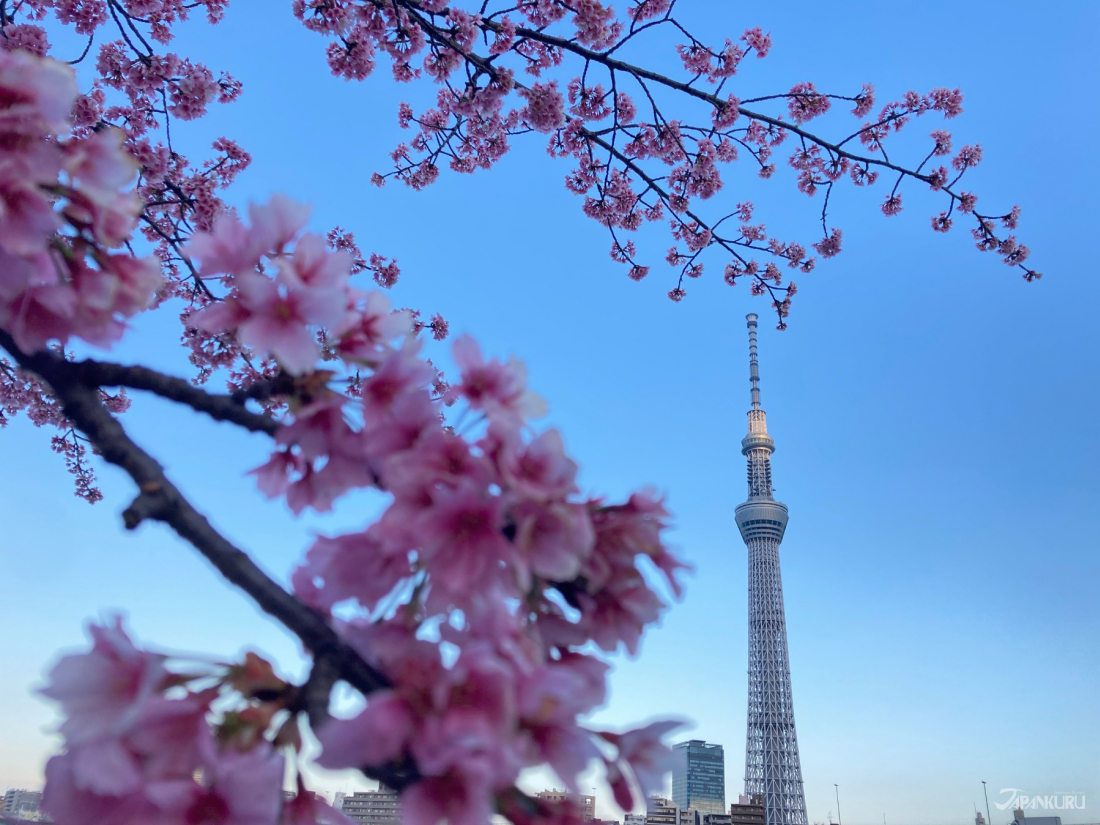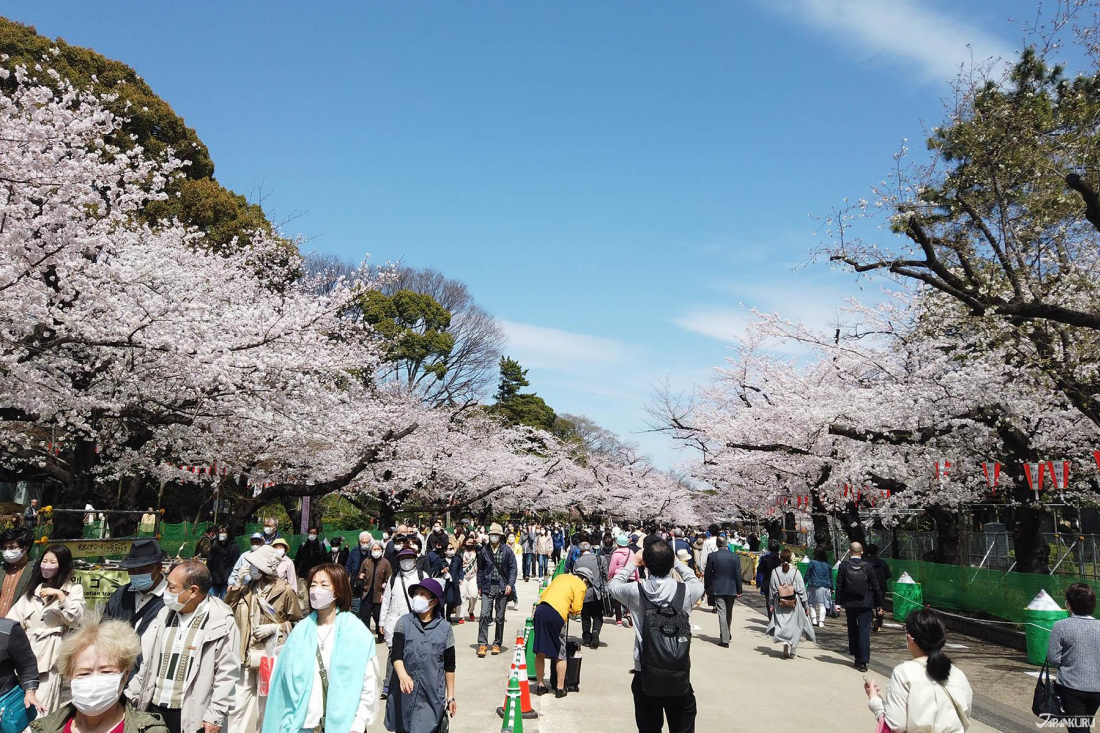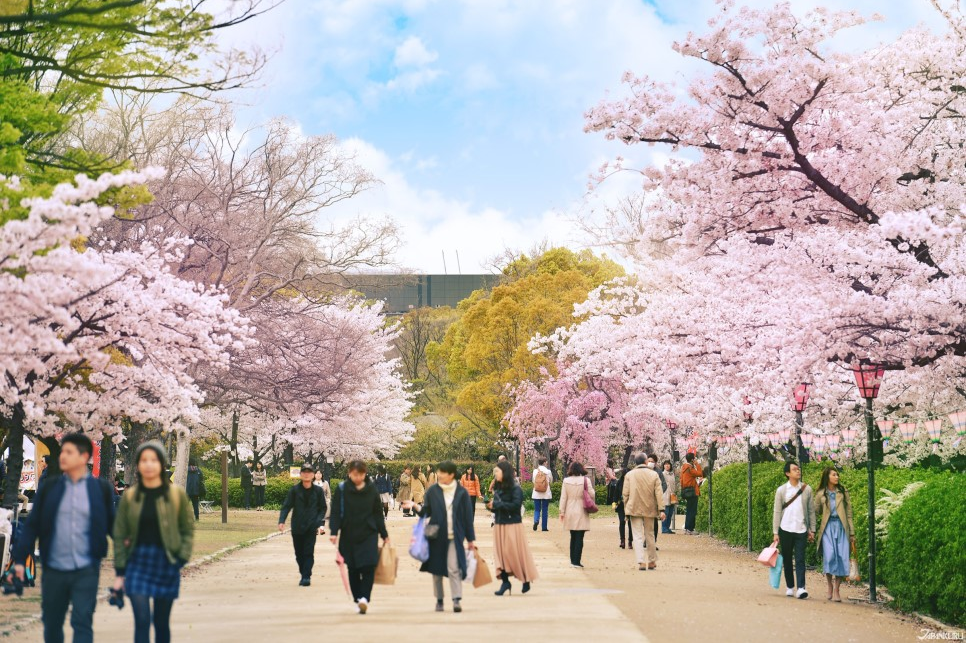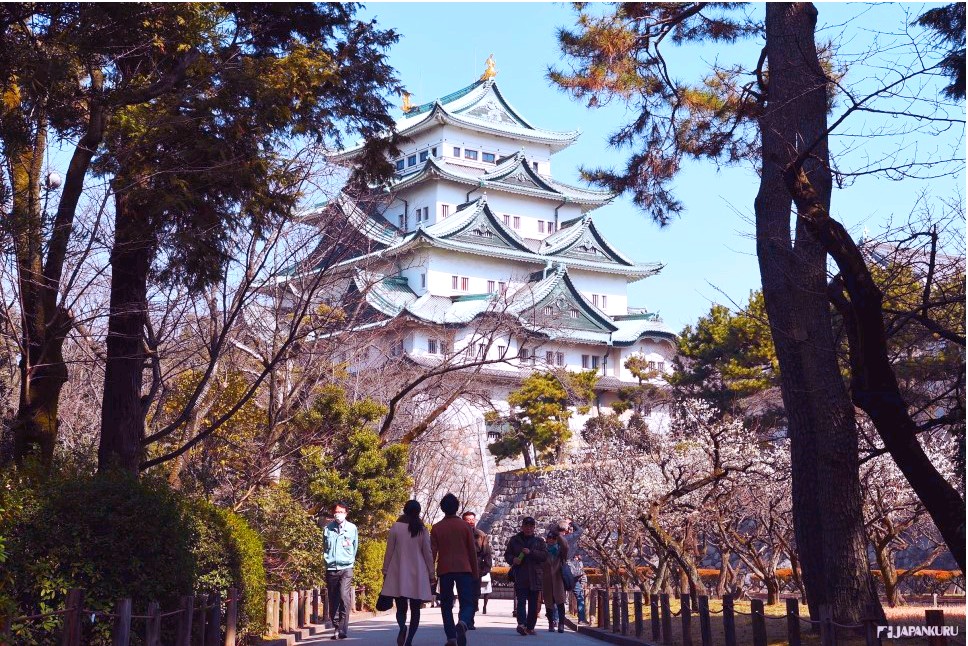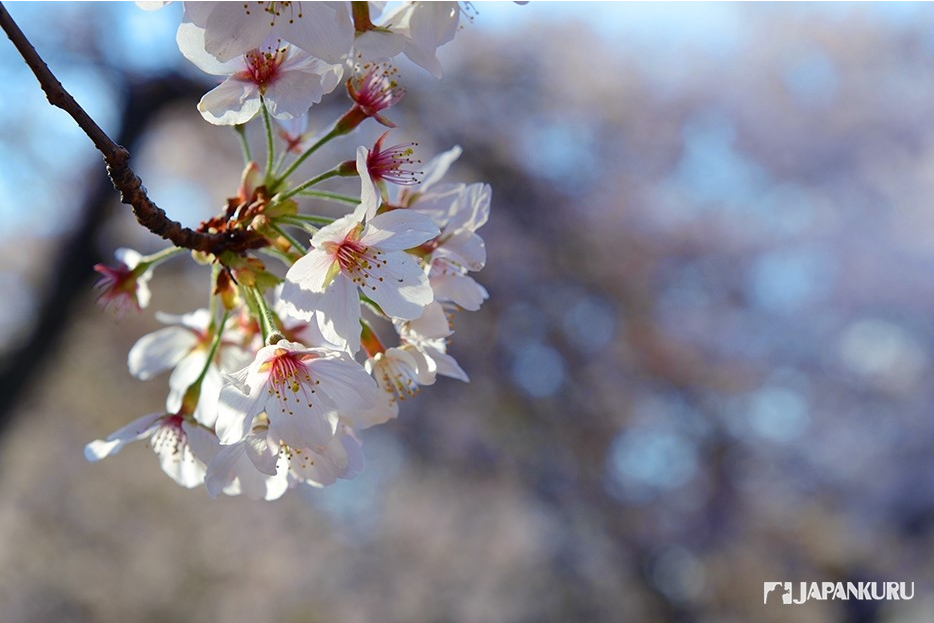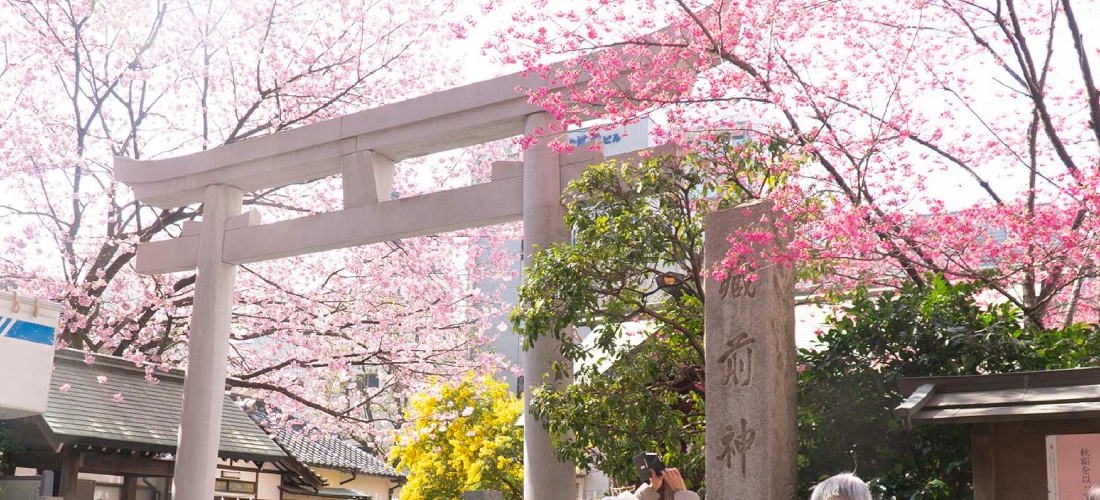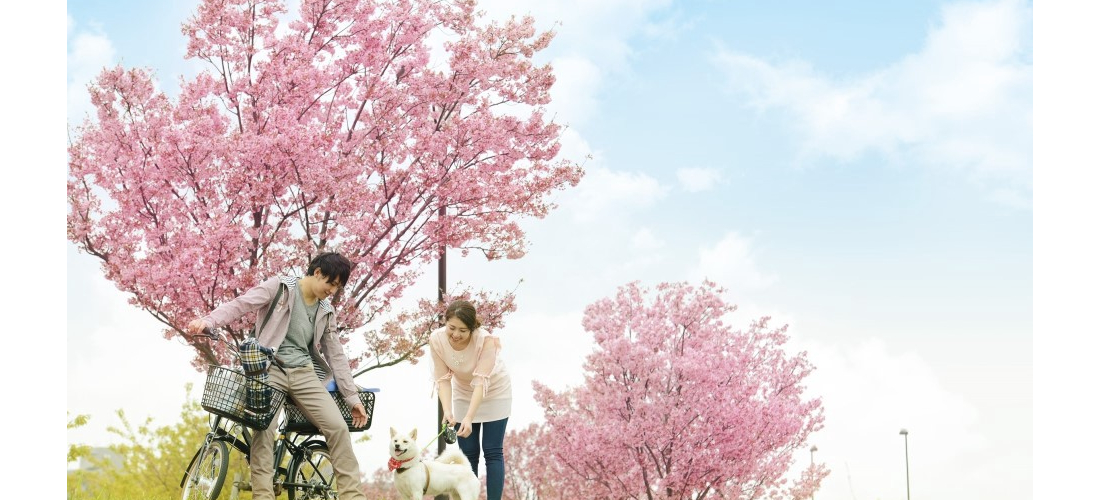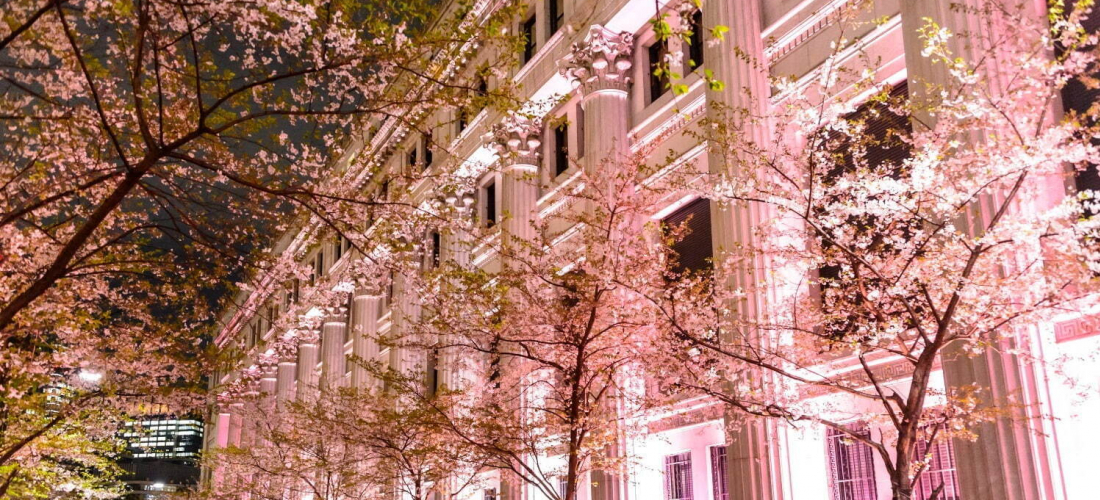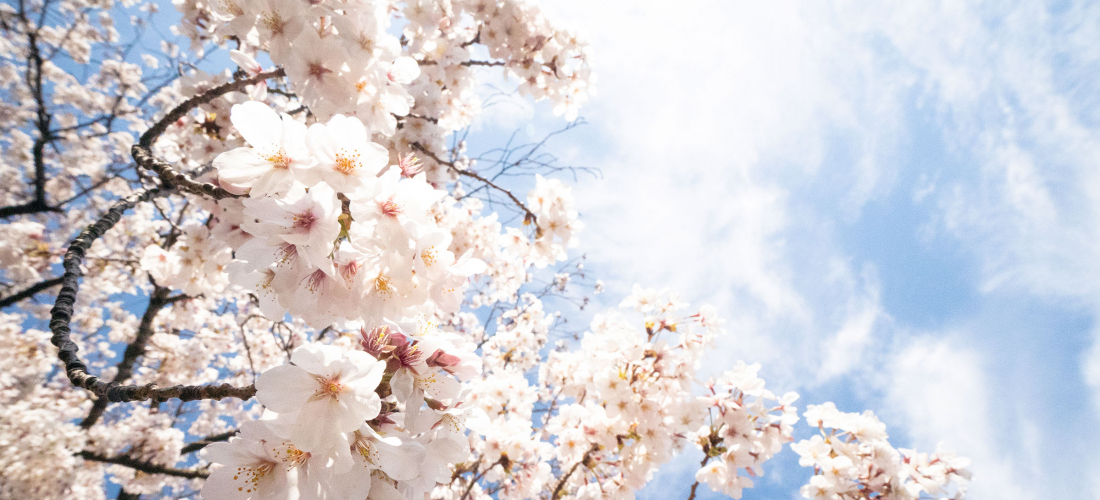
CONTENTS
Looking for the best places to see cherry blossoms in Japan? Ready for a day of hanami picnics? Here’s a little guide to sakura spots around Japan, and when to see them, to get you started on your cherry blossom journey.
🌸 The Best Time to See Cherry Blossoms in Japan 🌸
The exact dates for cherry blossom blooms around Japan vary year to year, and from city to city, but the best time for cherry blossom viewing in Japan is from late March through April. Your next question will probably be "so when exactly should I visit Japan to see the cherry blossoms at their best?", but choosing exact dates can be a little complicated, since regional climates and even individual trees can vary a lot! Colder weather in the north means that cherry blossoms bloom a little bit later, and different varieties of cherry tree also bloom at different times. The most popular sakura bloom on a tree called the Yoshino Cherry or the Somei-yoshino, and since its pale pink blossoms can be found all around Japan, peak cherry blossom season in Japan is often focused on this one variety. But there are early and late-blooming cherry blossoms in Japan, too like the early spring Kawazu-sakura or even cherry trees that bloom in autumn! Cherry blossom season isn't exactly one specific time, which means that with a little planning, it's not too hard to see gorgeous cherry blossoms in Japan.
In the early days of each spring, experts take a look at the weather patterns, and they make much more specific predictions for that spring's sakura season, deciding when exactly the cherry blossoms will look the most beautiful. As you can see on this popular sakura season map, in 2024 Japan's cherry blossom blooms will be a little late! The dates indicate predictions for when the flowers (especially Somei-yoshino) will really start to bloom, kicking off a sakura season that only lasts a couple of weeks. While the earliest predictions this year anticipated a slightly early cherry blossom season, probably influenced by a handful of warm days in February, a series of cold rainy weeks have pushed the cherry blossom season further and further back, resulting in a rather late bloom! Osaka and Nagoya are looking at a season that starts at the end of March, and Tokyo's dates have moved incrementally from mid-March all the way to the end of the month, or even the beginning of April. But sightseers looking to enjoy Japan's beautiful cherry blossoms will still want to get a start on their hanami plans before it's too late! For some of the best cherry blossom viewing destinations to visit in Tokyo and around Japan, check out our guide below.
🌸 Tokyo Cherry Blossom Spots 🌸
Ready to surround yourself with pink petals and sweeping cherry boughs? We've collected a few top spots around Japan just for you, starting with Tokyo!
Located in the Nakameguro area near Shibuya, Meguro River (目黒川) is consistently one of, if not the, most popular place to go cherry blossom viewing in Tokyo. There are over 800 cherry blossom trees lined up along the riverbanks, stretching on for almost 4km (2.5 miles). Lanterns hang along the river in front of the trees, making the spot equally beautiful in the sunshine and after sunset, when the lanterns cast a soft glow on the flowers. While there are a few restaurants and convenience stores nearby, and food and drink stands set up during the Meguro River Cherry Blossom Festival season, this isn't really a good place for the hanami picnic tradition. There isn't much space to lay down a tarp and spread out! So join the crowds and take a nice walk among the flowers instead!
Meguro River (目黒川の桜)
Meguro River, Meguro City, Tokyo
Access: 5 min walk from JR Meguro Station
During the cherry blossom season, Rikugien is most famous for the garden's huge weeping cherry blossom tree, which towers above at 15m (almost 50ft) high and 20m (65ft) wide, with blooms said to "pour like a waterfall." At night the weeping cherry blossom tree is lit from below, making it one of Tokyo's most famous nighttime cherry blossom viewing spots. Aside from its spectacular sakura, Rikugien is a traditional Japanese garden, first constructed by a local samurai in 1695, with permission from the Tokugawa shogunate.
Rikugien (六義園の桜)
6-16-3 Honkomagome, Bunkyo City, Tokyo
Access: 7 min walk from JR Komagome Station
Park Hours: 9:00 – 17:00
Light Up: sunset – 21:00
Admission: 300 yen
Right next to the popular sightseeing area of Asakusa, and with a great view of Tokyo Skytree in the background, the many sakura trees that grow along the water on the Sumida River make it a beautiful place to take a walk under the fluttering pink petals and breathe in the fresh spring air.
Sumida Park (隅田公園)
1 Hanakawado, Taito City, Tokyo
Access: 5 min walk from Asakusa Station
One of the most impressive cherry blossom viewing spots in Tokyo is just five minutes from the nearest station, with about 170 cherry trees spread between Tokyo's Imperial Palace and the British Embassy. The reflection of the cherry blossoms in the water is noted as being particularly beautiful, and the area is always crowded with people during sakura season.
Chidorigafuchi Park (千鳥ヶ淵公園)
1-2 Kojimachi, Chiyoda City, Tokyo
Access: 5 min walk from Tokyo Metro Hanzomon Station Exit 5
Shinjuku Gyoen National Garden, where over 1000 cherry trees of 65 different species bloom each year, has an incredibly long cherry blossom season thanks to the trees' variety! Visit the popular park any time in late March or early April to see different sakura blooming throughout the different gardens, each blooming at a slightly different time, and many with slightly different flowers as well. Plus, Shinjuku Gyoen is (unsurprisingly) right in Shinjuku, so after a picnic in the park you can spend the afternoon exploring one of Tokyo's busiest neighborhoods.
Shinjuku Gyoen National Garden (新宿御苑の桜)
11 Naitomachi, Shinjuku City, Tokyo
Access: 5 min walk from Shinjuku Gyoenmae Station, or 10 min walk from JR Shinjuku Station South Exit
Other great places to see cherry blossoms in the Tokyo area include Ueno Park (上野公園), Inokashira Park (井の頭公園), Yoyogi Park (代々木公園), and Hibiya Park (日比谷公園). Tokyo's cherry blossoms generally begin blooming towards the end of March, but they'll usually stick around through early April!
🌸 Osaka Cherry Blossom Spots 🌸
One of Osaka's most famous sightseeing spots, Osaka Castle is the perfect venue for hanami (cherry blossoms viewing). Osaka Castle has a long history of being taken and (unfortunately) destroyed by many Japanese warlords like Oda Nobunaga and Hidetada Tokugawa, making it an extremely important historical site, but the surrounding park is also filled with sakura! The park area covers around 494 acres, filled with trails and grassy areas perfect for picnics or frisbee under the cherry blossoms. There are over 4,000 cherry blossom trees all around the castle, and at night the cherry blossoms are lit up by surrounding lanterns and lights, for a romantic touch.
Osaka Castle (大阪城)
1-1 Osakajo, Chuo Ward, Osaka
Access: Osakajo Koen Station on the JR Osaka Loop Line
Castle Admission: 600 yen (park is free)
A symbol of Osaka, the Expo’70 Commemorative Park is about 260 hectares (642 acres) packed with not only a Japanese garden, but also the Japan Folk Crafts Museum, National Museum of Ethnology, and many sports and recreation areas. It's a little like the Ueno Park of Osaka! There are some 5,500 cherry blossom trees planted around the park, with nine different varieties of cherry blossoms. Ever since the park was chosen as one of "Japan's Top 100 Cherry Blossom Spots," they've extended the hanami hours until 9pm every night, and they light up the trees at night as well!
Expo '70 Commemorative Park (万博記念公園)
Senribanpakukoen, Suita, Osaka
Access: 1 min walk from Banpaku-Kinen-Koen Station on the Osaka Monorail
Hours: 9:30 – 21:00 (last entry 20:30)
🌸 Nagoya Cherry Blossom Spots 🌸
With about 1000 cherry blossom trees, Nagoya Castle might be the second most popular place for hanami in Aichi Prefecture in some rankings, but the historic majesty of the castle really sets off the lovely pink of the flowers. There's nothing more Japanese than a stroll through a cherry blossom garden in the shade of a towering castle! Even at night, Nagoya Castle keeps the castle grounds illuminated, so visitors can even enjoy the cherry blossoms after dark.
Nagoya Castle (名古屋城)
1-1 Honmaru, Naka Ward, Nagoya, Aichi
Access: Shiyakusho Station or Sengencho Station
Castle Admission: 500 yen (park is free)
Going back to that ranking above, many people say that the very best spot for cherry blossom viewing in Aichi Prefecture is actually Dogo Park (道後公園) near Dogo Onsen! Nagoya locals also frequently recommend Tokugawaen Garden (徳川園), which is only about 10 minutes from Nagoya Castle by bus.
🌸 Plan the Perfect Cherry Blossom Trip 🌸
Cherry blossom viewing is an iconic part of springtime in Japan, and one of the biggest reasons why so many travelers choose to visit the country during March and April each year, to the point that "sakura" and "hanami" have made their way into English sightseeing brochures and beyond. With so many great places to view the flowers throughout Japan, we couldn't even begin to list them all! But armed with a few popular spots, hopefully you'll know where to get started next time you find yourself surrounded by Japan's pink flowers and hanami traditions!
For more info and updates from Japan, check Japankuru for new articles, and don't forget to follow us on twitter, instagram, and facebook!
Details
NAME:hanami (花見)
PROFILE
Follow us @Japankuru on Facebook, Instagram, and Twitter!
COMMENT
FEATURED MEDIA
VIEW MORE
・Accommodations for Odaiba Sightseers: Mitsui Garden Hotel Toyosu PREMIER ・住宿推薦 三井花園飯店 豐洲普米爾 ・오다이바 관광 맞춤 숙소: 미츠이 가든 호텔 토요스 프리미어 ・ค้างคืนที่ Mitsui Garden Hotel Toyosu Premier โรงแรมสำหรับผู้มาเยือน Odaiba #japankuru #odaiba #tokyo #tokyotrip #japantrip #japantravel #mitsuigardenhotel #mitsuigardenhoteltoyosupremier #tokyohotel #odaibahotel #toyosu #tokyoview #tokyobay #rainbowbridge #미츠이가든호텔토요스프리미어 #오다이바 #오다이바맛집 #오다이바건담 #오다이바해변공원 #오다이바야경 #오다이바온천

Nagano Prefecture is famous for delicious soba noodles, and in the city of Ueda, you can learn from the experts! Local aunties run this cooking class, teaching you everything you need to know to make your own delicious plate of soba noodles entirely from scratch. #japankuru #soba #sobanoodles #japanesefood #travelexperience #japan #japantrip #ueda #nagano #japaneseculture #japanexperience #daytrip #daytour #cookingclass #japanesecookingclass #上田市 #そば作り #소바체험 #우에다시 #나가노여행 #일본소바

Kuramae Shrine is known for its early-blooming cherry blossoms and its gorgeous golden mimosa blooms, making it a great sakura spot for travelers arriving in Tokyo a little early for the main cherry blossom season. It’s also tucked away in a neighborhood packed with trendy cafes and coffee shops. Kuramae is a lovely place to spend the day. 🌸☕️ ・ #japankuru #kuramaeshrine #kuramae #tokyo #tokyotrip #cherryblossom #cherryblossoms #mimosa #tokyocherry #花見 #蔵前神社 #ミモザ #桜 #東京 #Japan #日本 #일본 #Japon #ญี่ปุ่น #Japão #Japón #япония #japantravel #日本旅行 #日本旅遊 #일본여행 #japan_of_insta #japantrip #traveljapan

Local Japanese Favorites at the Okinawa Don Quijote ② Ohta’s Isan, the digestive aid of the Japanese people ・ ・ 2024唐吉訶德不可不知的好物推薦② 日本國民消化小幫手:太田胃散 ・ ・ 오키나와 돈키호테 숨은 꿀템2. 일본 국민 소화제! 오타이산 #japankuru #okinawa #donki #沖縄 #오키나와 #오키나와여행 #오키나와돈키호테 #일본쇼핑리스트 #오타이산 #일본소화제 #太田胃酸 #ohtasisan

Happy Valentine's Day from the Japankuru team! May your day be full of sweet chocolates and sweet nothings. 💕 Or, if you're like a rising number of women in Japan, take the opportunity to treat yourself! 🍫💝💆 • Find out more at Japankuru.com! (Link in bio.) • #japankuru #valentinesday #valentineschocolate #japanesechocolate #japaneseculture #バレンタイン #バレンタインチョコ #メリーチョコレート #Japan #日本 #일본 #Japon #ญี่ปุ่น #Japão #япония #japantravel #日本旅行 #日本旅遊 #일본여행 #japan_of_insta #japantrip #traveljapan #japan🇯🇵 #japanlife #igerstokyo #explorejapan #japanfocus #enjoyjapan #japantravelphoto

Japankuru Coupon: BEAMS fashion, accessories, lifestyle goods, and more! BEAMS 5% Discount Coupon ▶︎ Validity Dates: February 1 ~ February 29, 2024 ▶︎ Discount: 5% off all products in-store ▶︎ Usable At: BEAMS stores throughout Japan (all stores except BEAMS JAPAN Izumo and BEAMS JAPAN Nikko) ▶︎ Details: Please present this coupon page before payment to receive your discount! This coupon is also valid in combination with tax-free discounts/refunds for foreign tourists. (Tax-free shopping is only available at some BEAMS locations.) Some products may not be eligible for discount. ・ ・ ・ BEAMS - JAPANKURU優惠折扣券 BEAMS 2024年2月限定特別優惠券 店內全部商品95折 ▶︎使用期間:2024/2/1到2024/2/29 ▶︎使用範圍:日本全國店舖 ▶︎使用方法:結帳時請務必事先向店員出示本優惠券,若未出示本優惠券恕無法享有本優惠。本優惠券可搭配免稅優惠一併使用,但不排除特定門市無法使用本優惠券。此外,不排除特定商品不適用本優惠券。 ・ ・ ・ 「빔즈(BEAMS) x 재팬쿠루(JAPANKURU)」스페셜 할인 쿠폰 빔즈(BEAMS) 5% 할인 쿠폰 ▶유효기간: 2024년 2월 1일 ~ 2월 29일(한 달 동안) ▶︎할인율: 매장 내 전 상품 “5% 할인" ▶︎해당 매장: 일본 전국 빔즈 (BEAMS) 매장 (BEAMS JAPAN이즈모、BEAMS JAPAN닛코는 쿠폰 할인 대상 제외 점포입니다) ▶︎상세 내용: 결제 전 본 쿠폰 페이지를 제시하면 정가대비 5% 할인된 금액에 구매하실 수 있습니다! 본 쿠폰은 외국인 관광객들을 대상으로 하고 있으므로 면세 혜택(빔즈 일부 매장)과 별도로 추가 할인이 가능합니다. (일부 매장 및 제품은 대상에서 제외될 수 있습니다.) #japankuru #beams #beamsjapan #beamsginza #coupon #재팬쿠루 #빔즈재팬 #빔즈 #일본여행 #일본쇼핑 #일본쇼핑리스트 #銀座 #東京 #tokyoshopping #japankurucoupon


